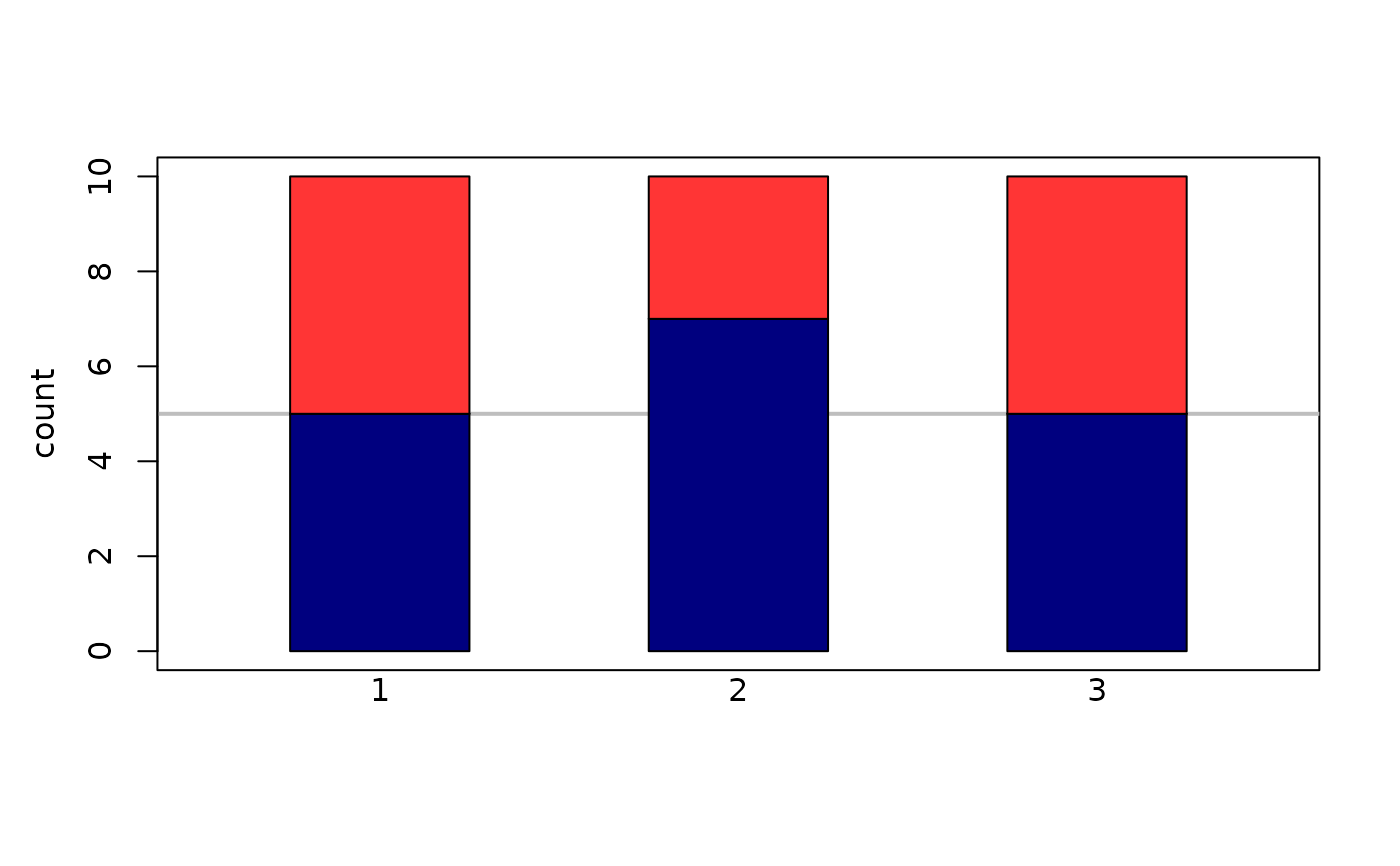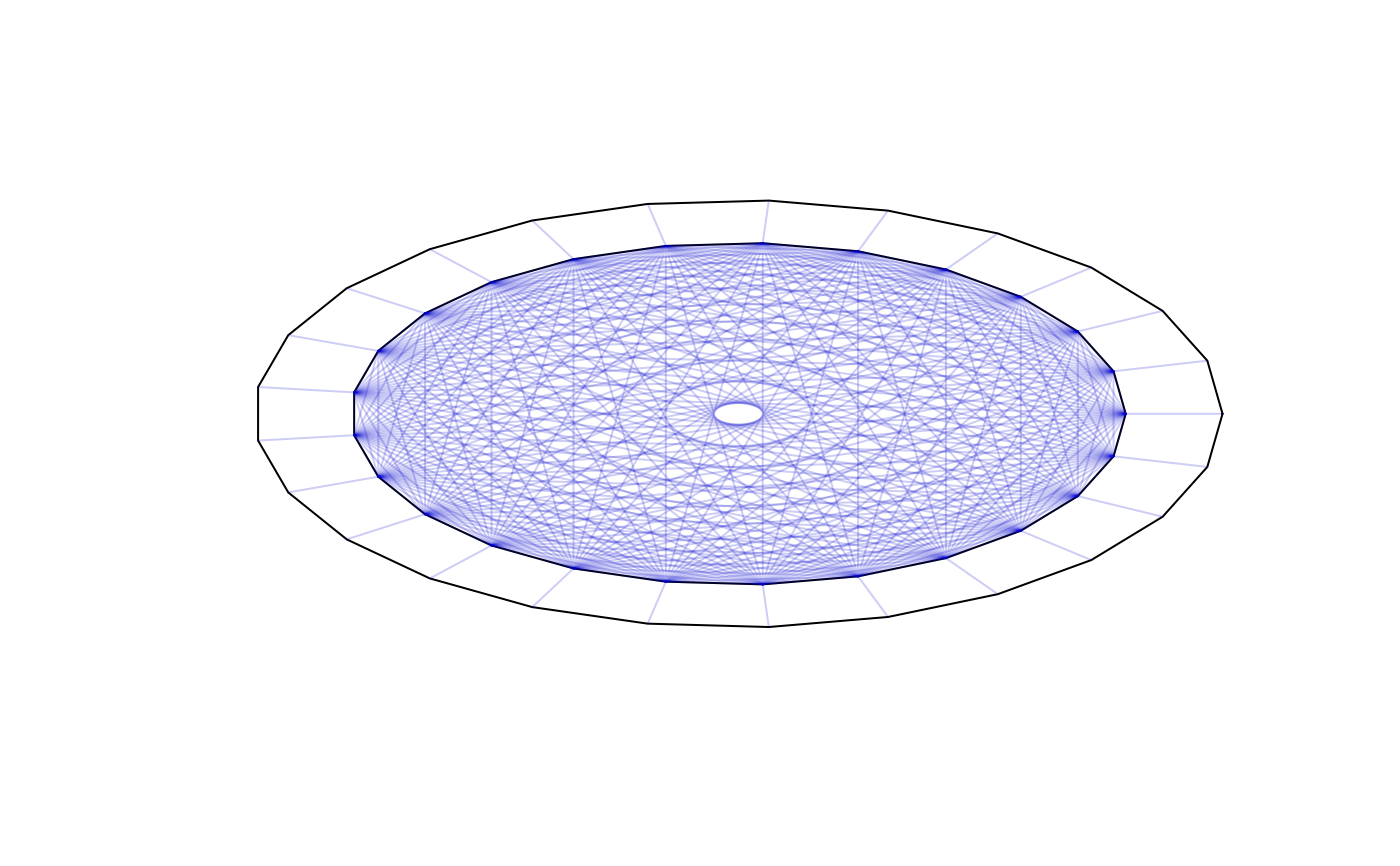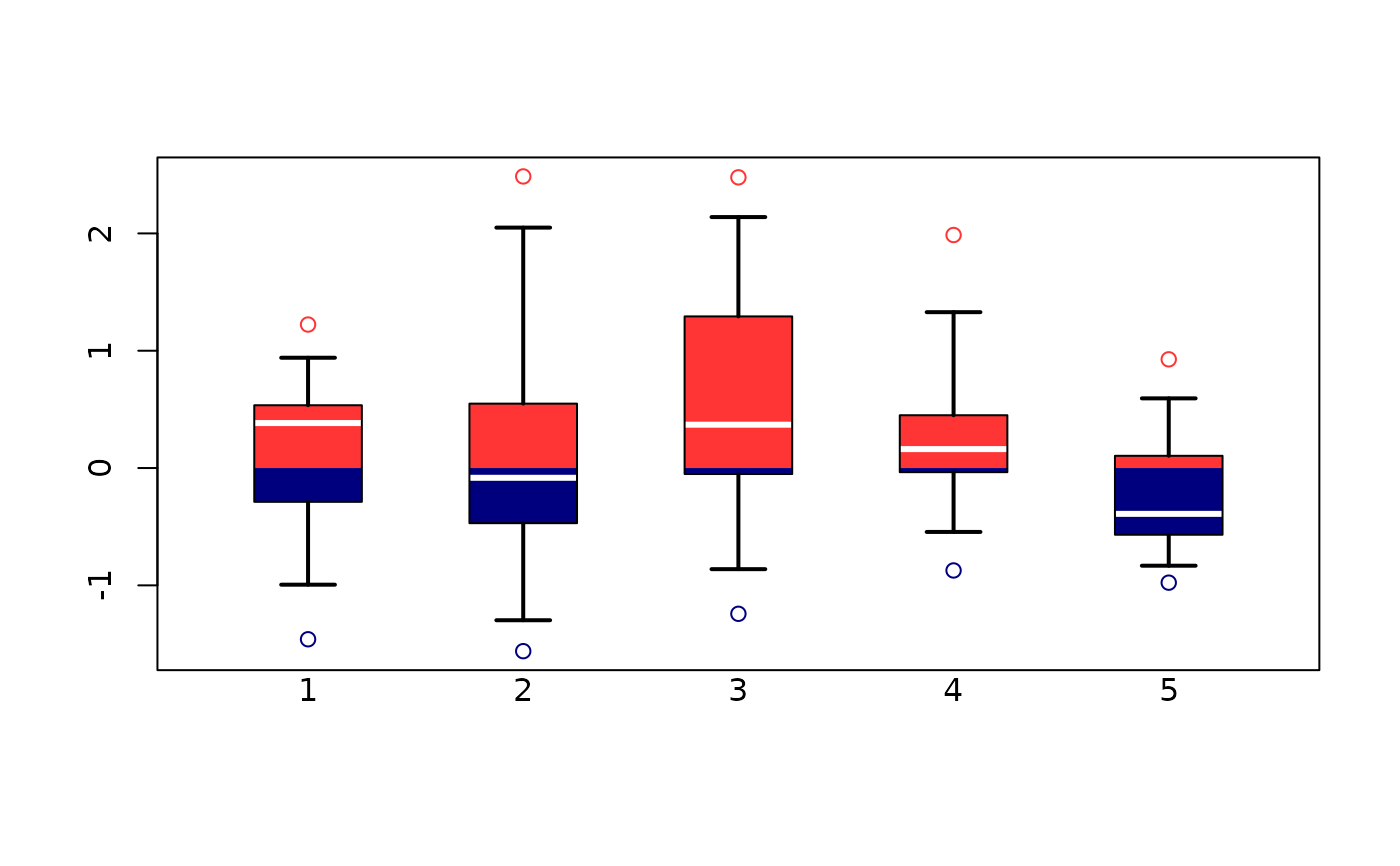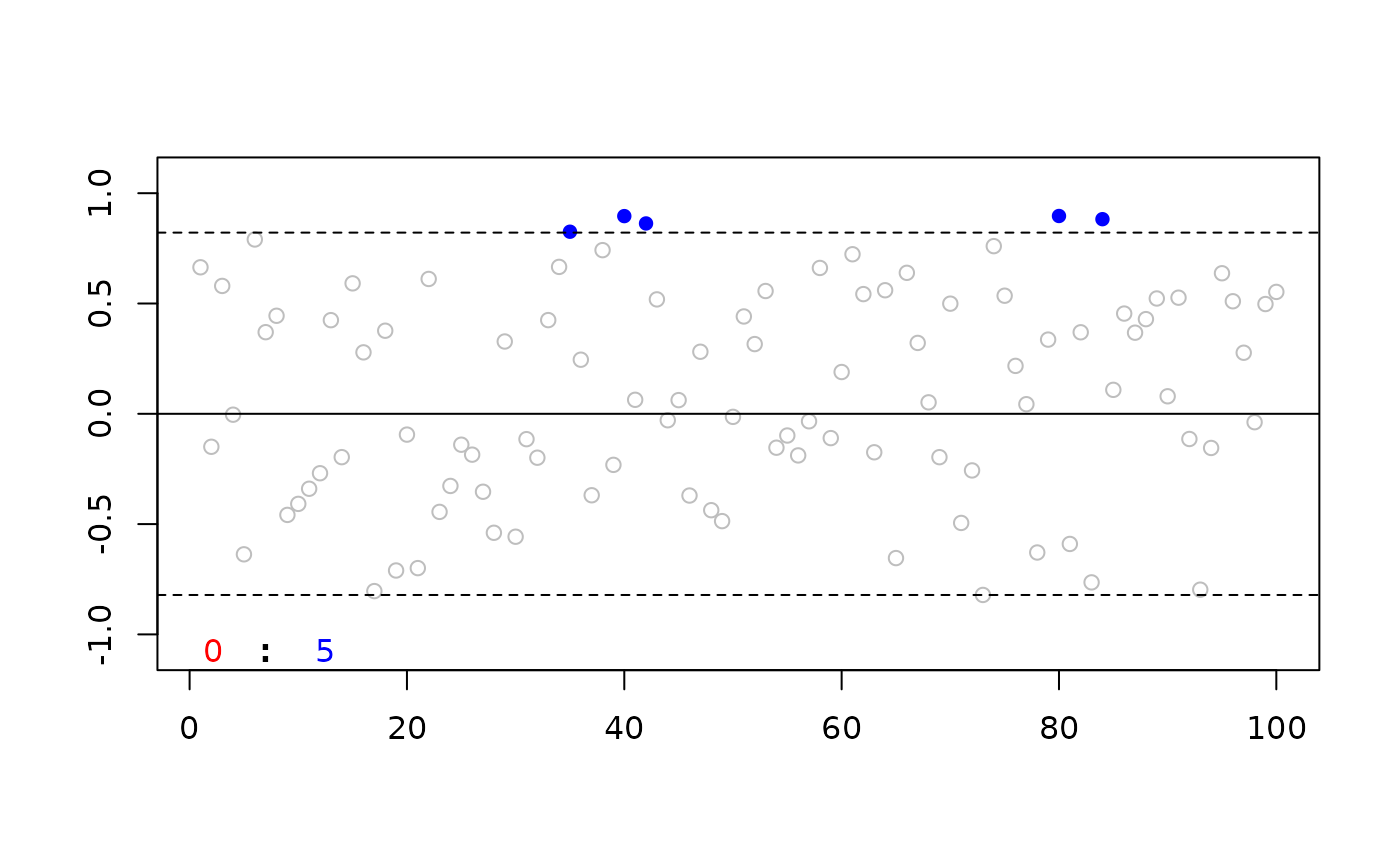Functions for the palasso manuscript.
plot_score(X, choice = NULL, ylab = "count")
plot_table(
X,
margin = 2,
labels = TRUE,
colour = TRUE,
las = 1,
cex = 1,
cutoff = NA
)
plot_circle(b, w, cutoff = NULL, group = NULL)
plot_box(
X,
choice = NULL,
ylab = "",
ylim = NULL,
zero = FALSE,
invert = FALSE
)
plot_pairs(x, y = NULL, ...)
plot_diff(x, y, prob = 0.95, ylab = "", xlab = "", ...)Arguments
- X
matrix with \(n\) rows and \(p\) columns
- choice
numeric between \(1\) and \(p\)
- margin
\(0\) (none), \(1\) (rows), or \(2\) (columns)
- cutoff
numeric between \(0\) and \(1\)
- b
between-group correlation: vector of length \(p\)
- w
within-group correlation: matrix with \(p\) rows and \(p\) columns
- group
vector of length \(p\)
- x, y
vectors of equal length
- ...
additional arguments
- prob
confidence interval: numeric between \(0\) and \(1\)
Value
to do
Details
The function plot_score compares a selected column to each of the
other columns. It counts the number of rows where the entry in the selected
column is smaller (blue), equal (white), or larger (red).
See also
Use palasso to fit the paired lasso.
Examples
### score ###
n <- 10; p <- 4
X <- matrix(rnorm(n*p),nrow=n,ncol=p)
palasso:::plot_score(X)
 ### table ###
n <- 5; p <- 3
X <- matrix(rnorm(n*p),nrow=n,ncol=p)
palasso:::plot_table(X,margin=2)
### table ###
n <- 5; p <- 3
X <- matrix(rnorm(n*p),nrow=n,ncol=p)
palasso:::plot_table(X,margin=2)
 ### circle ###
n <- 50; p <- 25
X <- matrix(rnorm(n*p),nrow=n,ncol=p)
Z <- matrix(rnorm(n*p),nrow=n,ncol=p)
b <- sapply(seq_len(p),function(i) abs(cor(X[,i],Z[,i])))
w <- pmax(abs(cor(X)),abs(cor(Z)),na.rm=TRUE)
palasso:::plot_circle(b,w,cutoff=0)
### circle ###
n <- 50; p <- 25
X <- matrix(rnorm(n*p),nrow=n,ncol=p)
Z <- matrix(rnorm(n*p),nrow=n,ncol=p)
b <- sapply(seq_len(p),function(i) abs(cor(X[,i],Z[,i])))
w <- pmax(abs(cor(X)),abs(cor(Z)),na.rm=TRUE)
palasso:::plot_circle(b,w,cutoff=0)
 ### box ###
n <- 10; p <- 5
X <- matrix(rnorm(n*p),nrow=n,ncol=p)
palasso:::plot_box(X,choice=5)
### box ###
n <- 10; p <- 5
X <- matrix(rnorm(n*p),nrow=n,ncol=p)
palasso:::plot_box(X,choice=5)
 ### pairs ###
n <- 10
x <- runif(n)
y <- runif(n)
palasso:::plot_pairs(x,y)
### pairs ###
n <- 10
x <- runif(n)
y <- runif(n)
palasso:::plot_pairs(x,y)
 ### diff ###
n <- 100
x <- runif(n)
y <- runif(n)
palasso:::plot_diff(x,y)
### diff ###
n <- 100
x <- runif(n)
y <- runif(n)
palasso:::plot_diff(x,y)
